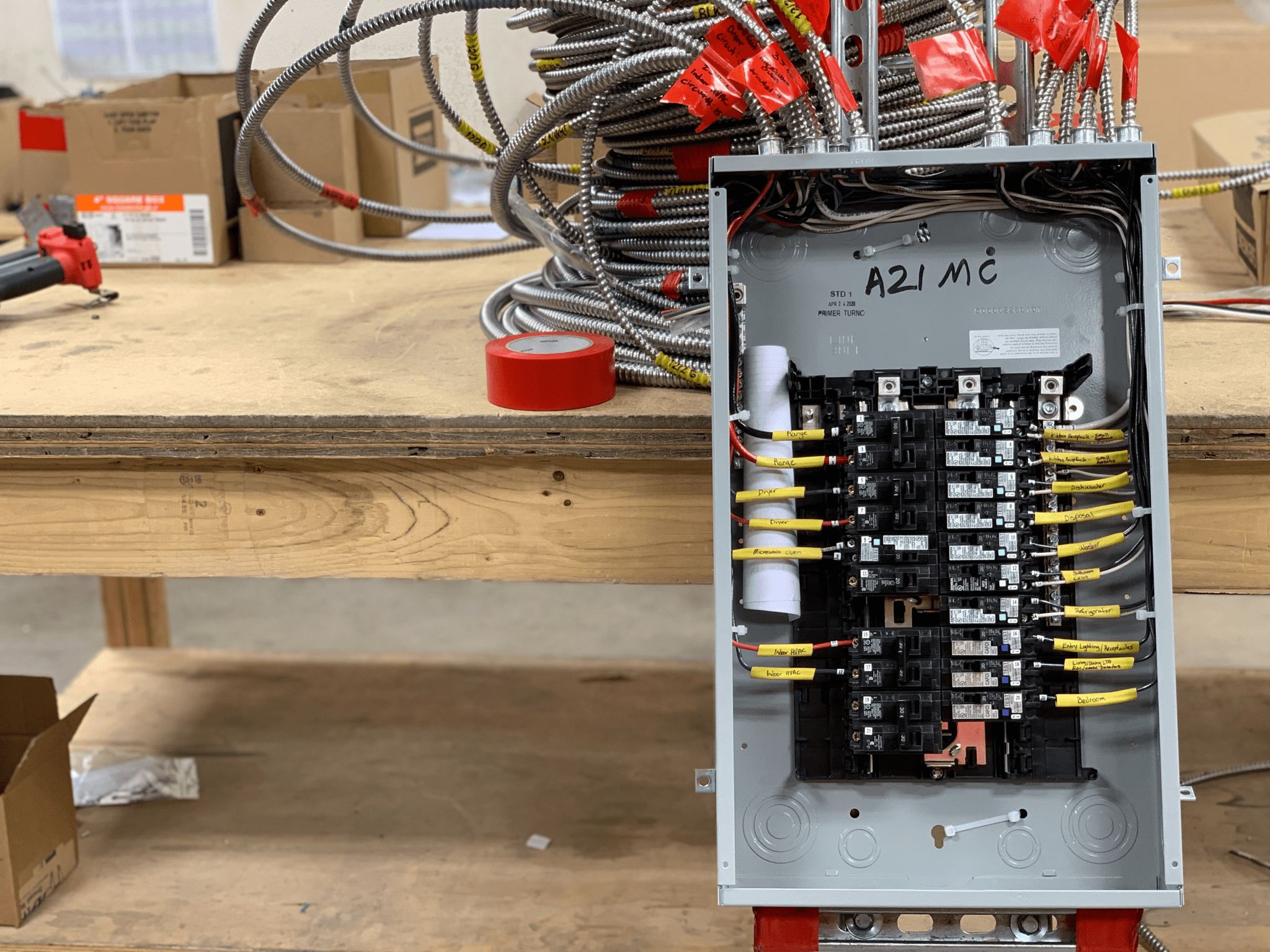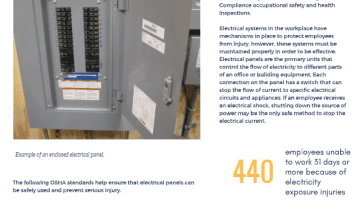Electrical hazards are among the most common safety hazards found during Office of Compliance occupational safety and health inspections.
Electrical systems in the workplace have mechanisms in place to protect employees from injury; however, these systems must be maintained properly in order to be effective. Electrical panels are the primary units that control the flow of electricity to different parts of an office or building equipment. Each connection on the panel has a switch that can stop the flow of current to specific electrical circuits and appliances. If an employee receives an electrical shock, shutting down the source of power may be the only safe method to stop the electrical current.
The following OSHA standards help ensure that electrical panels can be safely used and prevent serious injury.
ACCESSIBILITY
OSHA requires sufficient access and working spaces around all electrical equipment, or panels, serving 600 volts or less. 29 CFR 1910.303(g). For equipment operating at 600 volts, nominal or less to ground, electrical panels must have a minimum of three feet of clearance in front of the panel and a minimum clearance width of 2.5 feet or the width of the equipment, whichever is greater. This assures that in case of an electrical emergency, there is a clear working space in front of the panel for quick access to the circuit breakers. Electrical panels should also have secure covers to ensure no wires are exposed that could cause electrical shock. This also prevents the internal mechanisms from being exposed to dust, dirt, and moisture. Electrical panel boxes in commercial buildings should be secured and accessible by trained personnel only.
LABELED DIRECTORIES
Each breaker on an electrical panel should include a directory identifying where the electricity flows. 29 CFR 1910.303(f)(1). Having accurate directories can save time if electricity needs to be cut off in the event of an emergency. Incomplete or missing directories can also expose employees to potential hazards and lead to serious injury if the wrong circuit is deactivated or locked out during maintenance or repair of equipment.

